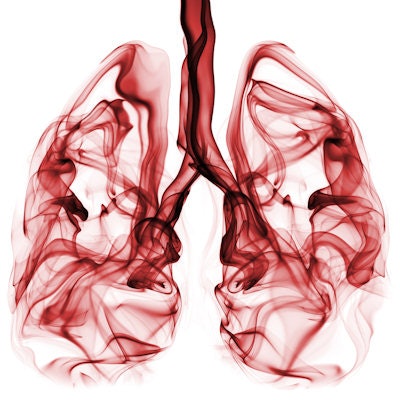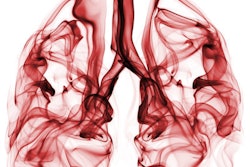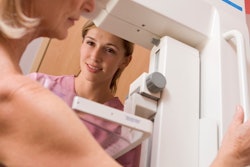
The complication rates and subsequent costs of invasive diagnostic procedures ordered after positive CT lung screening exams were two times greater in clinical practice than reported in the National Lung Screening Trial (NLST), according to an article published online January 14 in JAMA Internal Medicine.
The researchers, led by senior author Ya-Chen Tina Shih, PhD, from the University of Texas, examined the complication rates and downstream costs of invasive diagnostic procedures for 344,510 patients between 55 and 77 years old from the 2008-2013 U.S. MarketScan databases. MarketScan discloses insurance claims data for current employees up to 64 years old as well as for Medicare patients at least 65 years old.
"When looking at the results of the NLST trial, many have concerns about false positives, which put patients at risk with invasive diagnostic procedures," Shih said in a statement. "We felt that downstream complication rates reported in this trial might be underestimated because it was conducted in a well-controlled environment. For screenings conducted in real-world practices ... we might see even higher complication rates."
Though the researchers evaluated the same invasive procedures -- e.g., lung biopsy and surgery -- as those performed in the NLST, they did not limit their evaluation to procedures recommended after a positive CT lung screening exam as the NLST did. Rather, Shih and colleagues estimated the costs and complications of invasive procedures requested for a wide range of reasons, from symptoms indicating a lung abnormality to incidental lung nodules detected with any medical imaging modality.
Overall, the rate of complications following invasive procedures was more than double in the community-based clinical practices than in the NLST. Within the first year alone, the postprocedural complications led to additional medical costs roughly ranging from $6,000 to $57,000 per patient.
| Complications for lung procedures in community-based practices vs. the NLST | |||||
| NLST | U.S. community-based practices | ||||
| Age < 65 years | Age ≥ 65 years | Age < 65 years | Age ≥ 65 years | ||
| Rate of postprocedural complications | 9.8% | 8.5% | 22.2% | 23.8% | |
Thoracic surgery was associated with the highest rate of postprocedural complications at slightly more than 50%, followed by bronchoscopy at approximately 36% and needle biopsy at less than 20%. In addition, the rate of complications increased incrementally with age for needle biopsy but decreased with age for all other procedures. Costs also fell with increasing age for all types of procedures.
The findings suggest that the complication rates for managing suspected lung cancer may be higher than were anticipated by clinical trials. However, it remains unclear whether the majority of these complications arose in patients whom physicians referred for an invasive procedure based on positive CT lung screening exams or for a different reason entirely.
Furthermore, the rates of postprocedural complications varied widely among the healthcare facilities, according to the authors. This variation could have resulted from several factors, including differences in quality standards, physician proficiency, and clinical infrastructure.
"Identifying factors that differentiate between practices with high vs. low rates of complications will provide an opportunity to design interventions to lower the risk of postprocedural complications following positive CT findings and thereby reduce the physical, psychological, and financial burden associated with lung cancer screening," the authors wrote.



















